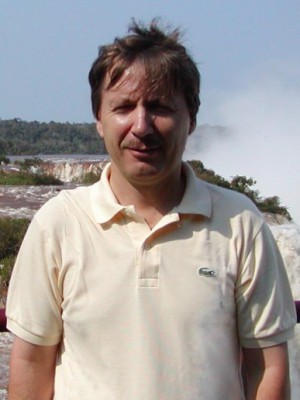resumo
Design of pyroelectric crystals decoupled from piezoelectricity is not only a topic of scientific curiosity but also demonstrates effects in principle that have the potential to be technologically advantageous. Here we report a new method for the design of such materials. Thus, the co-doping of centrosymmetric crystals with tailor-made guest molecules, as illustrated by the doping of alpha-glycine with different amino acids (Threonine, Alanine and Serine). The polarization of those crystals displays two distinct contributions, one arising from the difference in dipole moments between guest and host and the other from the displacement of host molecules from their symmetry-related positions. These contributions exhibit different temperature dependences and response to mechanical deformation. Thus, providing a proof of concept for the ability to design pyroelectric materials with reduced piezoelectric coefficient (d(22)) to a minimal value, below the resolution limit of the method (<0.005 pm/V).
palavras-chave
CENTROSYMMETRIC CRYSTALS; SOLID-SOLUTIONS; THIN-FILMS; SYMMETRY
categoria
Chemistry
autores
Ben Ami, SD; Ehre, D; Ushakov, A; Mehlman, T; Brandis, A; Alikin, D; Shur, V; Kholkin, A; Lahav, M; Lubomirsky, I
nossos autores
agradecimentos
This work was supported by the collaborative program of the Israeli Ministry of Science with the Russian Foundation for Basic Research (RFBR), grant #3-16492. Russian partners thank RFBR for the financial support within the project #19-52-06004 MHT?_a. The equipment of the Ural Center for Shared Use Modern nanotechnology Ural Federal University (Reg. No 2968) was used with the financial support of the Ministry of Science and Higher Education of the RF (Project No 075-15-2021-677). This work was developed within the scope of project CICECO-Aveiro Institute of Materials (UIDB/50011/2020 & UIDP/50011/2020) financed by national funds through the FCT-Foundation for Science and Technology (Portugal). IL thank the Israel Science Foundation for the financial support (#1898/22). The research made possible due to historic generosity of the Harold Perlman Family. VS is grateful for financial support of the Ministry of Science Higher Education of the Russian Federation (state task FEUZ-2020-0054).


